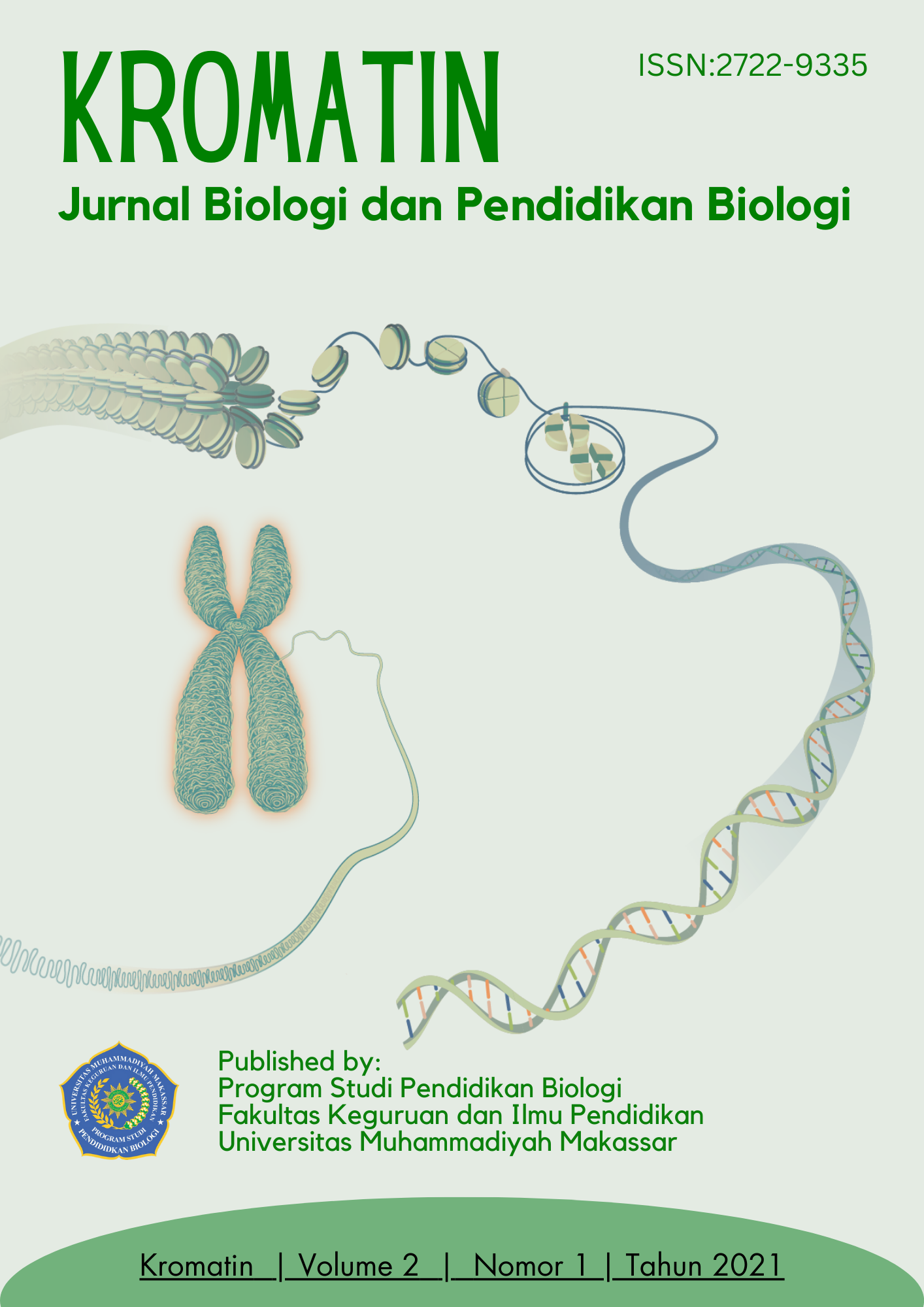Penerapan Model Pembelajaran Kooperatif Tipe Numbered Heads Together (NHT) Dapat Meningkatkan Aktivitas Dan Hasil Belajar Biologi Pada Konsep Makanan Dan Sistem Pencernaan Makanan Siswa Kelas XI SMA Negeri 14 Makassar
Abstract
The development of science and technology allows all parties to obtain information quickly and easily from various sources. Thus, students need the ability to acquire, select, and manage information to survive in an ever-changing, uncertain, and competitive situation. This type of research is action research (classroom action) which aims to determine the increase in activity and learning outcomes of students who are taught using the NHT model on the concept of the digestive system. The problem under study is the application of the NHT learning model and the activities and learning outcomes of biology class XI students at SMA Negeri 14 Makassar. Numbered Heads Together (NHT) cooperative learning model increases the activity of learning biology on the concept of food and the food digestive system in class XI students at SMA Negeri 14 Makassar. Numbered Heads Together (NHT) cooperative learning model improves biology learning outcomes on food concepts and the food digestive system in class XI students at SMA Negeri 14 Makassar. Keywords: NHT, SMA Negeri 14 Makassar, learning outcomesReferences
Arikunto, dkk. 2008. Penelitian Tindakan Kelas. Jakarta: PT. Bumi Aksara.
Arikunto, Suharsimi. 2007. Dasar-Dasar Evaluasi Pendidikan. Jakarta: PT. Bumi Aksara
Depdiknas. 2003. Kurikulum Berbasis Kompetensi. Jakarta: Pusat Kurikulum.
Haling, Abdul. 2007. Belajar dan Pembelajaran. Jurusan Pendidikan dan Teknologi
Ibrahim, M, dkk, 2000. Pembelajaran Kooperatif. Surabaya: Univesity Press.
Prawirohartono, dkk. 1997. Sains Biologi -2b. Jakarta: Bumi Aksara
Rini Rahmayani Syam. 2008. Peningkatan Hasil Belajar Biologi melalui Penerapam Model Pembelajaran kooperatif Tipe Team Assisted Individualization (TAI) pada siswa Kelas X7 SMA Negeri 2 Makassar. Skripsi. FMIPA. UNM. Makassar
Sardiman, A.M. 2002. Interaksi dan Motivasi Belajar Mengajar. Jakarta: Grafindo.
Simatupang, Halim. 2007. Pendidikan. www.halimsimatupang.blogspot.com. Diakses 2 Februari 2008.
Suherman, Erman. 2008. Model Belajar dan Pembelajaran Berorientasi Kompetensi Siswa. www.educare.e-fkipunla.net. Diakses 14 Juli 2008.
Tim Penyusun. 2005. Model-model Pengajaran dalam Pembelajaran Ilmu Pengetahuan Alam. Departemen Pendidikan Nasional. Jakarta.
Widdiharto. 2004. Model-Model Pembelajaran Matematika SMP (Makalah Seminar). Yogyakarta. Direktora Jenderal Pendidikan dasar dan Menengah Pusat Pengembangan Penataran Guru (PPPG) Matematika Yogyakarta.
Downloads
Published
Issue
Section
License
Authors who publish with this journal agree to the following terms:
1. Authors retain copyright and grant the journal right of first publication with the work simultaneously licensed under a Creative Commons Attribution 4.0 Internasional License that allows others to share the work with an acknowledgement of the work's authorship and initial publication in this journal.
2. Authors are able to enter into separate, additional contractual arrangements for the non-exclusive distribution of the journal's published version of the work (e.g., post it to an institutional repository or publish it in a book), with an acknowledgement of its initial publication in this journal.
3. Authors are permitted and encouraged to post their work online (e.g., in institutional repositories or on their website) prior to and during the submission process, as it can lead to productive exchanges, as well as earlier and greater citation of published work.
Licence:
Authors are free to:
1. Share: Copy and redistribute the material in any medium or format
2. Adapt: Remix, transform, and build upon the material for any purpose, even commercially.
The licensor cannot revoke these freedoms as long as the authors follow the license terms, which include the following:
1. Attribution: Authors must give appropriate credit, provide a link to the license, and indicate if changes were made. Authors may do so in any reasonable manner, but not in any way that suggests the licensor endorses the authors or authors’ use.
2. No additional restrictions: Authors may not apply legal terms or technological measures that legally restrict others from doing anything the license permits.
This work is licensed under a licensed under a Creative Commons Attribution 4.0 Internasional License/ CC BY 4.0.


